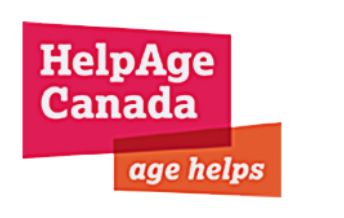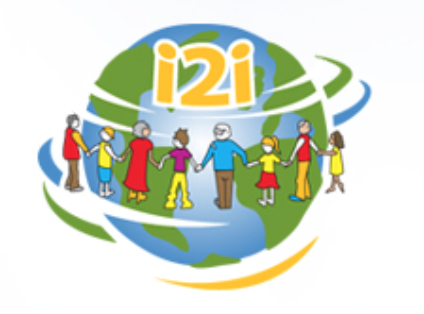If you or someone you know is being abused or neglected, help is available. Whoever you are—a concerned bystander, an overwhelmed caregiver, or a person experiencing abuse—you can take the first step now to get the support you need.
If you make a phone call and the line is no longer in service, or if you reach someone who isn’t helpful, don’t give up. Try again. Try another number. Look for someone else to talk to.
You can choose what kind of support feels right and what to do next. If you want information but are not ready to take action, you can choose not to give your name.
Obtenir de l'aide …
911
Call immediately if the situation is an emergency. Your call will be answered 24 hours a day.
Police
Call your local police if the situation is not an emergency but you suspect it might be against the law. Ask to speak to someone who has been trained in elder abuse or domestic/family violence.
Shelters
Many communities have shelters that provide temporary and emergency housing, especially in cases of domestic or family violence. These shelters are not just for younger women and their children. Older women can find support at a shelter, as well. Many shelters offer counselling and safety planning over the phone, 24 hours a day. You DO NOT have to be a shelter resident to get help and support. And you do not have to reveal your name unless you want to. Find a shelter in Canada
Other community services
To find out about other supports in your community, check your library, community centre, band or tribal council, hospital, doctor’s office, community legal clinic, or social service agencies. Some communities offer a helpline that can direct you to the most appropriate service for your needs.
Provincial and territorial services
Most provinces and territories have a department responsible for senior services. Contact them for general information about elder abuse programs and services.
Government of Canada
Visit the Government of Canada's website to find services and support in your province or territory or call Service Canada at 1-800-622-6232.
Your own circle of care
Your neighbours, friends, and family members may be important resources, as well. Think about who you can talk to within your own circle of care. Reach out to make your circle wider and stronger.
Stay involved. Know your rights.
Abuse can happen to people of all ages from all walks of life. By staying involved with people and activities, you are less likely to be abused. Staying active and involved also helps you stay healthy.
These are some things you can do to look after your well-being:
- Stay connected. Be in regular contact with people who support you and respect your decisions.
- Get involved. Find places in your community that offer activities and events where you can meet people.
- Reach out to others. Help to make a more caring community.
- Have fun. Do things that give you enjoyment, strength, and comfort.
- Stay physically active. Keep moving. Eat regularly and well.
- Pay attention to your finances. Be involved in and aware of what is happening with your money and belongings. Protect your right to make your own decisions.
- Get support. If you feel depressed, talk to a friend, faith leader, or social service agency in your community. You don’t have to be alone with problems. Ask for help.
Remember…
You have a right to be treated with respect.
You have a right to be safe.
You have a right to make your own choices.
Challenge ageist attitudes
Our attitudes about aging can make us more vulnerable to abuse and more likely to behave abusively.
The word "ageism" refers to attitudes and beliefs that cause people to treat older adults as if they were less important or less valued just because they are older. These attitudes are a factor in abusive situations because they allow people to believe it’s acceptable to ignore or control the older person. Ageist attitudes can also prevent people from recognizing and responding to the problems of older adults—including signs of abuse or neglect.
Discriminating against people because they are older (or younger) is wrong. We have a shared responsibility to challenge ageist attitudes wherever we see them—both in ourselves and in other people.
What you can do about ageism
- Identify the myths and misinformation
Recognize the myths about aging and negative attitudes about older adults. Start challenging the myths.
- Go beyond the stereotypes
A label like "elderly" or "senior" does a poor job of describing a person. These labels do not tell us whether the person is kind or uncaring; healthy or sick; mentally capable; or a reliable or unreliable worker or volunteer. Labels do not tell us about the person’s capacity for friendship or creativity or accomplishment. We de-personalize older adults by referring to them generically as "the elderly" or "our seniors." So…
- Recognize people as individuals.
- Acknowledge things that limit a person’s abilities; but also recognize ways in which the person is not limited.
- Learn more about positive aging
The better informed we are about aging and what to expect, the better able we are to evaluate and resist many of the inaccurate and negative stereotypes of aging. So…
- Get informed about physical, mental, social, sexual, and financial health for older adults.
- Promote positive attitudes about aging and about the contributions of older adults to our society.
- Learn more about ageism and discrimination
It is common for older adults to face discrimination in housing, health, and other key services. Older adults are sometimes treated as burdens on services. They may be refused services based on their age or on assumptions about their needs and abilities. So…
- Learn to recognize when "neutral" policies aren’t neutral.
- Recognize how ageism intersects with other "isms", such as sexism or racism.
- Listen to older adults who have experienced ageism. They are in the best position to tell us how ageism affects their lives.
- Speak up
When ageism and age discrimination go unchallenged, it gets harder to notice and easier to perpetuate. People assume it is acceptable to act this way. So…
- When someone you know uses ageist language or images, tactfully point out the inaccuracy. Educate them about alternatives.
- When someone ridicules an older adult, tells a belittling joke, or makes disrespectful comments, let them know that you are an advocate for positive aging, and that you find the comments offensive and harmful.
- Pay attention to how older adults are portrayed in the media. When you see or hear a negative stereotype, speak up. Write a letter or e-mail to the editor, sponsor, or producer.
- Build intergenerational bridges
- Ageism thrives on ignorance. People who don’t have contact with others who are older or younger than themselves are more likely to believe the negative stereotypes. So…Reach out. Meet people of all ages and experiences.
- Share stories, ideas, and skills—one-to-one and in groups. We all have things to teach and learn.
- Embrace common causes that widen your circle and strengthen you community.
- Get connected
Ageism is everybody’s business. So…
- Learn about professional associations, community groups, and other organizations that address ageism and promote positive aging. Get involved.
- Become a member of the Canadian Network for the Prevention of Elder Abuse. It’s free. Join here.
People who are abused need support. People who are abusive need help. The bystanders—including neighbours, friends, and family members—need to know what they can do to make a positive difference. Bystanders often know that abuse is happening, but don’t know what to do about it.
Here are some important reminders from Neighbours, Friends and Families for Older Adults:
- Abuse is never the fault of the person being abused.
- If an older adult tells you they are being abused or hurt, believe them.
- If you suspect abuse, check it.
- Before you act, ask yourself: What are the safety issues? Am I being respectful?
- If you are living in an abusive relationship, learn about safety planning.
The overall strategy is to interrupt the isolation that exists in all abusive relationships.
If you suspect abuse
- Talk to the older adult. Wait for a time when you are alone and not likely to be interrupted. Ask caring questions; don’t impose answers. Listen to the person’s experience. Ask what they want.
- Respect rights and personal values. Those rights include confidentiality, privacy, and self-determination. Mentally capable adults have the right to make decisions, including choices you might consider risky or unwise.
- Seek consent or permission. In most cases, you should get consent from an older adult before taking action. This includes getting consent before sharing the older adult’s personal stories, financial information, or health information with anyone else. Look for the least intrusive ways to offer help. If the person you are worried about doesn’t want to take action, respect their choice. Keep the lines of communication open. However, if the situation is dangerous, don’t hesitate: call the police or 911.
- DO NOT confront or accuse the abusive person. They may take it out on the older adult.
- Avoid ageism. Do not let ageist or discriminatory thinking affect your judgment. Avoid stereotypes about older people. Respect the dignity of all people, regardless of their age. Learn what you can do about ageism.
- Get informed. If you work with older adults, you need to educate yourself about elder abuse. Know that abuse and neglect can happen anywhere and by anyone. Learn the warning signs of abuse. Learn what you can do to help, and what the law says you must do when someone’s safety is at stake. If you’re not sure what to do, or if you need support, check with a professional.
Adapted from Neighbours, Friends and Families for Older Adults (itsnotright.ca) and from the Canadian Centre for Elder Law's A Practical Guide to Elder Abuse and Neglect Law in Canada, p. 5.
Learn about safety planning
- What are the safety issues?
- Am I being respectful of the older adult’s rights?
If you are living in an abusive relationship, a safety plan can help you live more safely day to day. It can also help you to plan a safer way to make changes or leave the situation. Leaving is the most dangerous time in an abusive relationship, so it’s important to plan well. DO NOT tell the abusive person about your plan.
A local shelter, police, or victim services office can help you create a good safety plan. Here are some basic steps:
- Arrange for regular home visits and telephone contact with friends, family, or service providers.
- Have emergency money and a prepaid phone card somewhere outside of the home.
- Give copies of important documents and keys to trusted friends or family members.
- Pack a bag of extra clothing, medicine, and personal aids (glasses, hearing aids, etc.)—whatever you would need to manage for a few days if you decide to leave. Give the bag to a trusted friend or family member.
- Keep phone numbers of friends, relatives, shelters, or other trusted individuals in a convenient place.
- Have a safety word that will let a trusted friend or family member know if you are in danger.
Physical abuse
It is physical abuse if somebody hits an older adult or handles the person roughly, even if there is no injury. Giving a person too much or too little medication, or physically restraining a person, are also forms of physical abuse.
Sexual abuse
It is sexual abuse if somebody forces an older adult to engage in sexual activity. This may include verbal or suggestive behaviour, not respecting personal privacy, sexual touching, or sex without the person’s consent.
Emotional abuse
It is emotional abuse if somebody threatens, insults, intimidates, or humiliates an older adult, treats the person like a child, or does not allow them to see their family and friends. Emotional abuse can devastate a person’s sense of identity, dignity, or self-worth.
Financial abuse
It is financial abuse if somebody tricks, threatens, or persuades older adults out of their money, property, or possessions. Misusing a power of attorney is a common form of financial abuse.
Violation of rights and freedoms
It is a violation of rights and freedoms if somebody interferes with an older adult’s ability to make choices, especially when those choices are protected under the law. Examples include interfering with spiritual practices or traditions; withholding mail or information; denying privacy; preventing visitors; dictating how someone else can spend their own money; or keeping someone in an institution without a legitimate reason.
Neglect
It is neglect if somebody fails to provide the necessities of life, such as food, clothing, a safe shelter, medical attention, personal care, and necessary supervision. Neglect may be intentional or unintentional. Sometimes the people providing care do not have the necessary knowledge, experience, or ability.
Systemic abuse
Systemic abuse (also called institutional abuse) refers to rules, regulations, policies, or social practices that harm or discriminate against older adults. Systemic abuse includes rules that are developed for an apparently neutral purpose, but that hurt the person. Examples include using physical restraints as an easy way to prevent falls; or diapering a person instead of helping them to the washroom, simply to save time or effort. Sometimes staff shortages can lead to systemic neglect.
Elder abuse is any action or inaction that threatens the health or wellbeing of an older adult. Some people call it senior abuse or abuse of older adults.
Older adults have the right to live safely, to be treated with respect, and to manage their own affairs. When someone violates those rights and causes harm, that’s abuse. Often the person causing the harm is someone in a position of trust, like a family member, friend, or caregiver.
All abuse is an abuse of power and a violation of trust in a relationship.All abuse is an abuse of power and a violation of trust in a relationship. The harm can be physical, emotional, financial, sexual, or involve some other breach of a person’s rights and freedoms. Neglect is also a form of abuse.
The abused person may or may not realize that their rights have been violated. The person causing the harm may or may not know that their action or inaction is abusive. Bystanders might suspect something is wrong, but be unwilling to get involved or unsure about what to do.
Abuse can happen to anyone at any age. It is a myth that abuse only happens to dependent, frail, elderly people. Abuse often happens to capable, fully functioning older adults. People are usually ashamed to find themselves in an abusive relationship. They might ask themselves: How did this happen to me? How did I get here?
Some abusive behaviour is illegal; all abuse is wrong.
About this overview
This brief overview describes different types of abuse, some warning signs, and some steps you can take to prevent or stop abuse. The information is adapted from the following sources:
- It’s Not Right! Neighbours, Friends and Families for Older Adults
- Understanding Senior Abuse
- A Practical Guide to Elder Abuse and Neglect Law in Canada
Many of our network members across Canada are working hard to develop resources that meet specific needs in their communities. Visit our xxxx page to find out more and to recommend additional links.
Please note: The information on this website is not a substitute for professional legal advice, counselling, or other supports. Elder abuse is complex. A response that is helpful in one situation might be harmful in another. If you have any doubts about what to do in a particular situation, talk to a professional.
Learn about
Page 16 sur 17


















